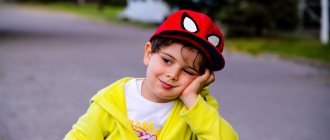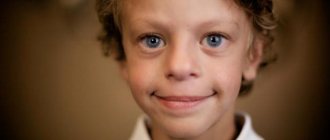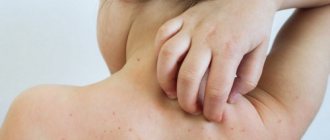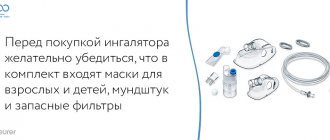Introduction
Autism spectrum disorders (ASD) are a group of different conditions.
They are characterized by certain difficulties with social interaction and communication. Other features include atypical patterns of action and behavior, such as difficulty moving from one activity to another, focusing on details, and unusual reactions to sensations. The abilities and needs of people with autism vary and may change over time. Some people with autism are able to live independently and productively, while others are severely impaired and require lifelong care and support. Autism often affects educational and employment opportunities. In addition, families providing care and support often have a difficult time. Community attitudes and the level of support provided by local and national authorities are important factors in determining the quality of life of people with autism.
Signs of autism can be identified in early childhood, but the condition is often diagnosed at much later stages.
Autism is often accompanied by other disorders, including epilepsy, depression, anxiety and attention-deficit hyperactive disorder, as well as disruptive behavior. People with autism often have co-occurring conditions, including epilepsy, depression, anxiety and attention deficit hyperactivity disorder, as well as sleep disorders and disruptive behaviors such as self-harm. The intellectual abilities of people with autism vary widely, from severe disabilities to high levels of intelligence.
Article:
Autism (Greek autos - “oneself”) separation from reality, isolation from the world, absence or paradoxical reactions to external influences, passivity and hyper-vulnerability in contacts with the environment and surroundings. The problem of early childhood autism (ECA) and autism spectrum disorders (ASD) occupies a special place in child psychiatry. The identification of autism has also been increasing over the years. There are more cases with complex and complicated forms. Timely and correct correction of RDA is of great importance. This is especially important, since without specialized comprehensive medical-psychological-pedagogical correction (MPC), the majority of autistic children (up to 90%) become disabled. With proper and sufficient classes that begin at an early age, up to 30-40% of children have the opportunity to study in correctional schools of the 7th and 8th types, and some children (up to 15%) complete their studies in the general education program. Autism occurs 3-4 times more often in boys than in girls. Features of mental development of children with autism spectrum disorders. To understand and recognize the presence of autism in a child, parents need to carefully monitor the child’s behavior and notice unusual signs that are not typical for the age norm. Most often, these signs can be identified in children under 3 years of age. Childhood autism is considered as a developmental disorder that affects all areas of the child’s psyche: intellectual, emotional, sensitivity, motor sphere, attention, thinking, memory, speech. Speech development disorders: at an early age, absent or weak humming and babbling may be noted. After a year, it becomes noticeable that the child does not use speech to communicate with adults, does not respond to names, and does not follow verbal instructions. By the age of 2, children have a very small vocabulary. By the age of 3, they cannot form phrases or sentences. At the same time, children often stereotypically repeat words (often incomprehensible to others) in the form of an echo. Some children experience a lack of speech development. For others, speech continues to develop, but there are still communication impairments. Children do not use pronouns, addresses, or talk about themselves in the third person. In some cases, regression of previously acquired speech skills is noted. Difficulties in communication and lack of emotional contact with others: Such children avoid tactile contact, there is almost complete absence of eye contact, there are inadequate facial reactions and difficulties in using gestures. Children most often do not smile, do not reach out to their parents, and resist attempts to be picked up by adults. Children with autism lack the ability to express their emotions, as well as recognize them in others. There is a lack of empathy for other people. The child and the adult do not focus on one activity. Children with autism do not make contact with other children or avoid it, they find it difficult to cooperate with other children, and most often they tend to withdraw (difficulties in adapting to the environment). Violation of exploratory behavior: children are not attracted to the novelty of the situation, are not interested in the environment, and are not interested in toys. Therefore, children with autism most often use toys in an unusual way; for example, a child may not roll the entire car, but spend hours monotonously spinning one of its wheels. Or not understanding the purpose of the toy to use it for other purposes. Eating disorders: a child with autism can be extremely selective in the foods offered, food can cause disgust in the child, danger, and children often begin to sniff the food. But at the same time, children may try to eat an inedible thing. Violation of self-preservation behavior: due to a large number of fears, the child often finds himself in a situation that is dangerous for himself. The cause can be any external stimulus that causes an inadequate reaction in the child. For example, a sudden noise may cause a child to run in a random direction. Another reason is ignoring real threats to life: a child can climb very high, play with sharp objects, or run across the road without looking. Motor development disorder: As soon as the child begins to walk, clumsiness is noted. Also, some children with autism are characterized by walking on their toes, and there is a very noticeable lack of coordination of arms and legs. It is very difficult for such children to teach everyday actions; imitation is quite difficult for them. Instead, they develop stereotypical movements (performing monotonous actions for a long time, running in circles, swinging, flapping “like wings” and circular movements with their hands), as well as stereotypical manipulations with objects (sorting through small parts, lining them up in a row). Children with autism have significant difficulty mastering self-care skills. Motor clumsiness is pronounced. Perception disorders: difficulties in orientation in space, fragmentation in the perception of the environment, distortion of the holistic picture of the objective world. Difficulties in concentrating: children have difficulty focusing attention on one thing, there is high impulsiveness and restlessness. Poor memory: Parents and professionals often notice that children with autism are good at remembering things that are meaningful to them (this can cause them pleasure or fear). Such children remember their fright for a long time, even if it happened a long time ago. Features of thinking: experts note difficulties in voluntary learning. Also, children with autism do not focus on understanding the cause-and-effect relationships in what is happening, there are difficulties in transferring acquired skills to a new situation, and concrete thinking. It is difficult for a child to understand the sequence of events and the logic of another person. Behavioral problems: negativism (refusal to listen to an adult’s instructions, perform joint activities with him, withdrawal from a learning situation). Often accompanied by resistance, screaming, and aggressive outbursts. A huge problem is the fears of such children. They are usually incomprehensible to others because children often cannot explain them. A child may be frightened by sharp sounds or certain actions. Another behavioral disorder is aggression. Any disorder, violation of a stereotype, interference of the outside world in a child’s life can provoke aggressive (hysteria or physical attack) and auto-aggressive outbursts (damage to oneself). Each case of the disease is very individual: autism may have most of the listed signs in an extreme degree of manifestation, or may manifest itself only in some barely noticeable features. Types of autism spectrum disorder There are several current classifications of ASD: Kanner syndrome (Early childhood autism) - characterized by a “triad” of main disorders: difficulty establishing contacts with the outside world, stereotypic behavior, as well as delayed or impaired communicative functions of speech development. It is also necessary to note the condition for the early appearance of these symptoms (up to about 2.5 years). It manifests itself in children in 4 forms, depending on the degree of isolation from the outside world: Complete detachment from what is happening. This group is characterized by a lack of speech and the inability to organize the child (make eye contact, ensure that instructions and assignments are followed). When trying to interact with the child, he demonstrates the greatest discomfort and disruption of activity. Active rejection. Characterized by more active contact with the environment than the first group. There is no such detachment, but there is a rejection of a part of the world that is unacceptable to the child. The child exhibits selective behavior (in communicating with people, in food, in clothing) Preoccupation with autistic interests. It is characterized by the formation of overvalued preferences (for years a child can talk on the same topic, draw the same plot). The gaze of such children is directed at the person’s face, but they look “through” this person. Such children enjoy the stereotypical reproduction of individual impressions. Extreme difficulty in organizing communication and interaction. Autism in its mildest form. Children are characterized by increased vulnerability; contact with the world ceases at the slightest sensation of obstacles. Eye contact can be established with these children. Asperger's Syndrome. Formed from birth. Children have an early onset of speech development, a rich vocabulary, developed logical thinking, and no impairments in mental development. But at the same time, the communicative side of speech suffers: such children do not know how to establish contact with other people, do not listen to them, can talk to themselves, do not keep a distance in communication, and do not know how to empathize with other people. Rett syndrome. Its peculiarity lies in the fact that the development of a child up to 1-1.5 years proceeds normally, but then the newly acquired speech, motor and subject-role skills begin to disintegrate. This condition is characterized by stereotypical, monotonous movements of the hands, rubbing and wringing of the hands, which are not of a purposeful nature. The rarest of the diseases presented, it almost always occurs only in girls and is considered as a genetic disorder of brain development. Childhood psychosis. The first manifestations of symptoms are before 3 years of age. Characterized by disturbances in social behavior and communication disorders. There are stereotypies in behavior (children run monotonously in circles, sway while standing and sitting, move their fingers, shake their hands). Such children have eating disorders: they can swallow food without chewing. Their unclear speech can sometimes be an incoherent set of words. There are times when children freeze in place, like dolls. Atypical autism. It differs from autism in its age-related manifestation and the absence of one criterion from the “triad” of basic disorders. Correction of patients with ASD. Types of correction of ASD. Psychological correction is the most common and well-known type; characterized by a fairly wide range of techniques. Neuropsychological correction - this type includes a set of exercises consisting of stretching, breathing, oculomotor, facial and other exercises for the development of the communicative and cognitive sphere, and the exercises themselves differ markedly in time and quantity. Working with the child’s family and environment – first of all, this type of correction is aimed at mitigating emotional tension and anxiety among family members, since often parents of children with ASD also need help, including psychotherapeutic support and training programs (such programs are aimed mainly on the formation of feelings of understanding of the problem, the reality of its solution and the meaningfulness of behavior in the current family situation). Psychosocial therapy is, in fact, work with the child himself to form the cognitive, emotional and motivational-volitional resources of the individual for the possibility of further social adaptation, the need for which becomes more and more apparent as the child with ASD grows older. Speech therapy correction - given the fact that speech development disorders are one of the cardinal manifestations of ASD, this type of work with the child will be an integral part of the correction program. It is characterized by a focus on the formation of vocabulary, the development of auditory attention, as well as phonetic and speech hearing. Drug correction of ASD. Some forms of autism require medication for the child. For example, to improve concentration and perseverance, a doctor may prescribe vitamins and nootropic medications that improve thinking processes and stimulate speech development. And with high impulsiveness, aggression, negativism, and pronounced signs of “withdrawal,” psychotropic drugs can help. In some cases, Autism is combined with epileptic seizures. In such cases, drugs to prevent attacks are needed. Many mothers are afraid of medications. But medications are prescribed for a certain period, and not forever. Adverse events from medications are rare. And the result of the effect in most cases is worth the courage of the parents. In each case, it is necessary to individually decide what kind of therapy is needed. And the doctor must be able to clearly explain to parents all questions regarding medications.
Causes
Based on available scientific evidence, there may be many factors that increase a child's likelihood of developing ASD, including environmental and genetic factors.
Available epidemiological data clearly indicate that there is no causal relationship between autism spectrum disorders and the measles, mumps and rubella vaccine. Previous studies suggesting such a causal relationship were found to have methodological flaws (2)(3).
Likewise, there is no evidence to suggest that any childhood vaccine increases the risk of autism spectrum disorder. Reviews of the evidence on the potential association between the preservative thiomersal and aluminum adjuvants contained in inactivated vaccines and the risk of ASD strongly suggest that vaccines do not increase the risk of ASD.
Diagnostics
A child with developmental delays should be examined by a doctor to find the cause of the developmental delay. If a child exhibits any symptoms of autism spectrum disorder, he will most likely be referred to specialists for consultation, for example, a child psychiatrist, child psychologist, or pediatric neurologist.
Proper diagnosis requires consideration of the patient's complete history, physical examination, neurological examination, and direct assessment of the child's social, language, and cognitive development. Sufficient time should be provided for standardized interviews of parents regarding current problems and behavior history, as well as structured observation of social and communicative behavior and play.
A new blood test can detect about 17% of children with ASD, according to a new 2021 study. Scientists have identified a group of blood metabolites that could help detect some children with autism spectrum disorder. As part of the Childhood Autism Metabolome Project (CAMP), the largest metabolomics study of ASD, these results are a key step towards the development of a biomarker test for ASD [34].
In August 2021, researchers reported differences in bacterial gene expression in the oral region that may distinguish children with ASD from their healthy peers. The study suggests that GI microbiome abnormalities previously identified in children with ASD may extend to the mouth and throat [35].
Researchers from the University of Missouri School of Medicine and the Center for Autism and Neurological Disorders. M.W. Thompson in June 2018 identified a link between neurotransmitter imbalances and patterns of connections between brain regions that play a role in social communication and language. The study described two tests that could lead to more precise treatment [36].
Patient assessment and management
A range of interventions, beginning in early childhood and throughout life, can promote optimal development, well-being and quality of life for people with autism. Timely, evidence-based psychosocial interventions early in life can improve the ability of children with autism to communicate and interact effectively with others. It is recommended that children's development be monitored as part of routine maternal and child health care.
It is important that children, adolescents and adults diagnosed with autism and their carers have access to relevant information, referrals and practical support that is tailored to their individual, evolving needs and preferences.
The health care needs of people with autism are complex and require comprehensive services, including health promotion, care and rehabilitation services. In this regard, cooperation with other sectors, in particular with the education system, employment and social sector, is important.
Interventions for people with autism and other developmental disabilities must be planned and implemented with the participation of the people affected. Care for people with autism must be supported by action at local and community levels to make physical and social environments and relationships more accessible, inclusive and supportive.
How can we help?
| If you have discovered some of the described symptoms, this may indicate the development of a mental disorder. In this case, it is worth contacting a psychiatrist for diagnosis and initiation of timely treatment. In addition to face-to-face appointments , we offer a remote consultation service (online) , which is not inferior in quality to a personal meeting. Thus, you can receive qualified assistance from a high-level specialist, no matter where you are. |
Our clinic, near the Eastern Administrative District of Moscow, in Reutov, employs specialists who have extensive experience in treating mental disorders. We use the most modern and advanced techniques, guided by the principles of evidence-based medicine. Effective assistance and confidentiality of information constituting medical confidentiality are guaranteed.
Human rights
All people, including those with autism, have the right to the highest attainable standard of physical and mental health.
However, people with autism often face stigma and discrimination: their rights are unfairly denied in health care and education, and their opportunities to participate in society are limited.
People with autism experience the same health problems as the general population. In addition, they may have special health care needs related to ASD and other related conditions. They may be more vulnerable to chronic noncommunicable diseases due to behavioral risk factors such as physical inactivity and poor diet, and are at greater risk of violence, injury and abuse.
People with autism, like the rest of the population, need accessible health services to meet their general health needs, including promotion and prevention services, as well as treatment of acute and chronic conditions. However, compared with the general population, people with autism have higher rates of unmet health care needs. These people are more vulnerable in humanitarian emergencies. The most common problem is that health care providers do not have sufficient knowledge about autism and do not have a good understanding of the condition.
WHO Resolution on Autism Spectrum Disorders (WHA67.8)
In May 2014, the 67th World Health Assembly adopted a resolution on “Comprehensive and concerted efforts for the management of autism spectrum disorders”, which was supported by 60 countries.
This resolution calls on WHO to work with Member States and partner agencies to strengthen national capacity to address issues related to ASD and other developmental disabilities.
- World Health Assembly resolution WHA67.8: Comprehensive and concerted efforts to manage autism spectrum disorders
WHO activities
WHO and its partners recognize the need to strengthen countries' capacity to promote optimal health and well-being for all people with autism.
WHO is making efforts to
- encourage governments to take targeted action to improve the quality of life of people with autism;
- provide advice on policies and action plans to address autism in the broader context of physical and mental health and disability services;
- help improve the capacity of health care providers and providers to provide appropriate and effective care for people with autism; And
- promote the creation of favorable conditions for the lives of people with autism and other developmental disorders and for their participation in society.
Escape from the verbal jungle
Terminological disputes are a consequence of poor knowledge of the causes of diseases that manifest themselves in the triad characteristic of RDA. This is directly reflected in the classifications, because their final form depends on what principle the compilers used as the basis for dividing diseases into groups and subgroups. Despite the fact that ICD-11 clearly suggests that autism and ASD should be considered one and the same, in practice, in order to select diagnostic, treatment and correction algorithms, it is not always enough to assess only the level of intelligence and speech development, because these symptoms are only an indicator of the functional maturity of the brain. But classifiers do not remain unchanged. If the medical community decides that the new classification is not good enough, changes may be made.
For patients and their parents, it is not so much the name of the condition that is important, but rather early diagnosis, a comprehensive assessment of the child’s health, and selection of the most effective therapy and rehabilitation activities. There are no universal schemes for diseases in which the triad characteristic of childhood autism manifests itself; only an individual approach and active joint work of doctors, teachers and parents help. Perhaps the compilers of ICD-11 are right: in early diagnosis it is difficult to unambiguously differentiate various conditions that resemble RDA. It is almost impossible to provide assistance without an established diagnosis within the framework of evidence-based medicine, and the earlier the child begins to receive therapy, the better the prognosis.











